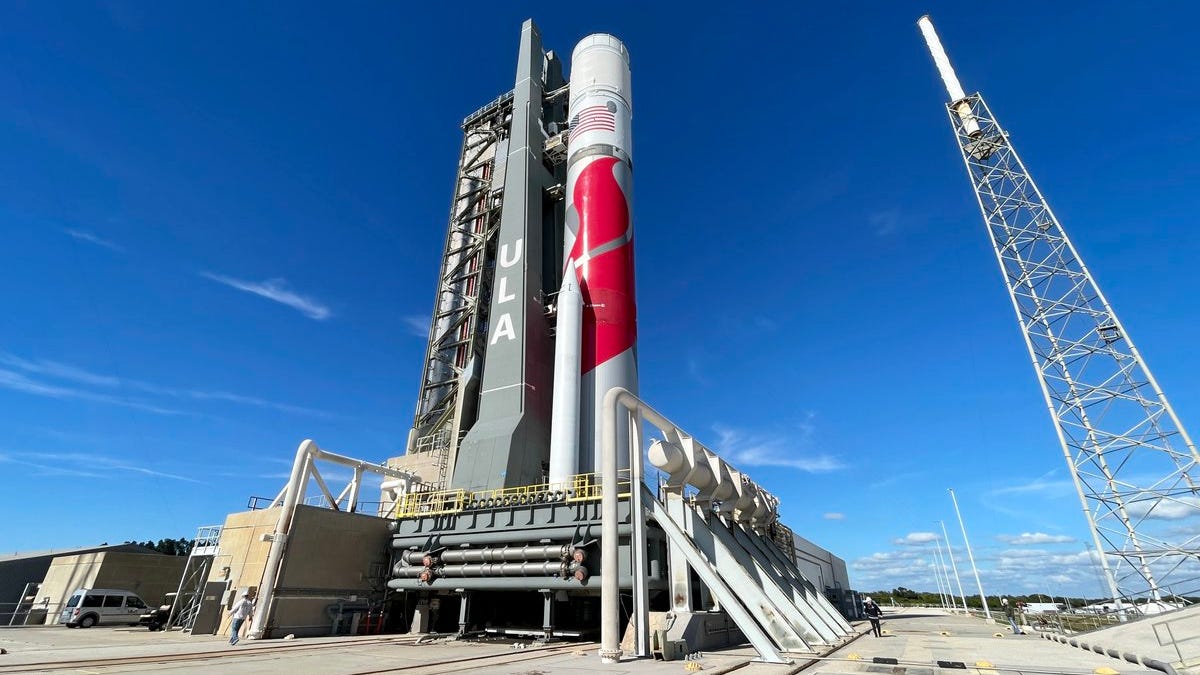On Monday, January 8, United Launch Alliance’s Vulcan Centaur is scheduled for its inaugural flight, a mission that will send a wide range of payloads to the Moon. Although not as advanced as SpaceX’s rockets, this expendable rocket boasts features that could make it a cornerstone vehicle in the industry.
Will You Click Windows’ New Copilot Button?
The 202-foot-tall (61.6-meter) Vulcan Centaur is set to launch from Space Launch Complex-41 at Cape Canaveral. This is a huge deal, as it marks the debut of ULA’s first new rocket design since its 2006 inception. While the (mostly) expendable Vulcan Centaur may not be revolutionary from a technological perspective, it represents a significant evolutionary step for ULA, a joint venture of Lockheed Martin Corporation and The Boeing Company.
The 70-foot-long fairing will be capable of delivering multiple payloads.Graphic: ULA
Vulcan Centaur’s developmental journey was significantly influenced by both geopolitical events and competitive pressures in the aerospace industry. The annexation of Crimea by Russia in 2014 was a pivotal moment, compelling ULA to reassess its reliance on Russian RD-180 engines. This situation, coupled with growing competition from SpaceX, spurred ULA’s decision to collaborate with Blue Origin in developing the BE-4 engines, signifying a tactical shift toward greater national self-reliance in rocket engine technology.
Vulcan integrates design elements from both ULA’s Atlas V and Delta IV rockets and is poised to be their successor. It can deliver payloads to a wide range of target destinations, from low Earth orbit (LEO) and geosynchronous orbit (GEO) through to lunar and deep space exploration missions. It’s a highly versatile rocket, equipped with the capability to launch multiple payloads simultaneously.
Related article: Swarming Robots, DNA, and Bitcoin: The Wild List of Stuff Heading to the Moon Next Week
Available in four standard configurations, Vulcan Centaur’s payload capacity varies based on the number of solid rocket boosters used, either zero, two, four, or six SRBs. These Graphite Epoxy Motor (GEM) 63XL Solid Rocket Boosters (SRBs) are provided by Northrop Grumman. The rocket’s configuration can be recognized by its unique code, such as the VC2S for its first launch. In this case, “V” represents Vulcan, “C” for Centaur, “2″ indicates the number of SRBs, and “S” denotes the payload fairing length, available in standard and long variants. So for a six-booster configuration with the long payload fairing, the designation would be VC6L.
Its maximum capability allows it to carry up to 25.8 metric tons to LEO and 7 metric tons to GEO. In comparison, SpaceX’s Falcon Heavy can lift more to LEO and GEO, but Vulcan Centaur’s flexibility and mission adaptability sets it apart.
Conceptual image of Vulcan Centaur launch.Image: ULA
The Vulcan Centaur’s first stage is equipped with two BE-4 engines, each producing 550,000 pounds of thrust, using a combination of liquified natural gas and liquid oxygen as propellants. Liquefied natural gas, primarily composed of methane, was chosen for its efficiency and potential reusability (ULA eventually aims to salvage and reuse the BE-4 engines from Vulcan launches, but not the first stage itself). The second stage is powered by two RL10 engines from Aerojet Rocketdyne—efficient engines with a long history of reliability. The rocket’s payload fairings, designed to accommodate a wide range of missions, can reach up to 70 feet (21.3 meters) in length and 17.7 feet (5.4 meters) in diameter.
It hasn’t been a smooth path to the starting line. In development since 2014 and originally slated for launch in 2019, Vulcan Centaur has faced its share of challenges, including engine delivery delays from Blue Origin, delays stemming from the covid-19 pandemic, and a testing explosion in March 2023. Despite these hurdles, the rocket completed key tests, including a successful hot fire test in June 2023 and a wet dress rehearsal last month, setting the stage for its upcoming maiden voyage.
Vulcan Centaur and its main components. Graphic: ULA
The Vulcan Centaur rocket, crucial for U.S. national security and commercial space ventures, will deploy key satellites and spaceplanes. It meets U.S. Space Force and intelligence needs for security launches and will also execute 38 launches for Amazon’s Project Kuiper. Click here to learn more about the ways in which Vulcan is poised to disrupt the sector and challenge SpaceX for key contracts, both with NASA and the Pentagon.
For more spaceflight in your life, follow us on X (formerly Twitter) and bookmark Gizmodo’s dedicated Spaceflight page.
